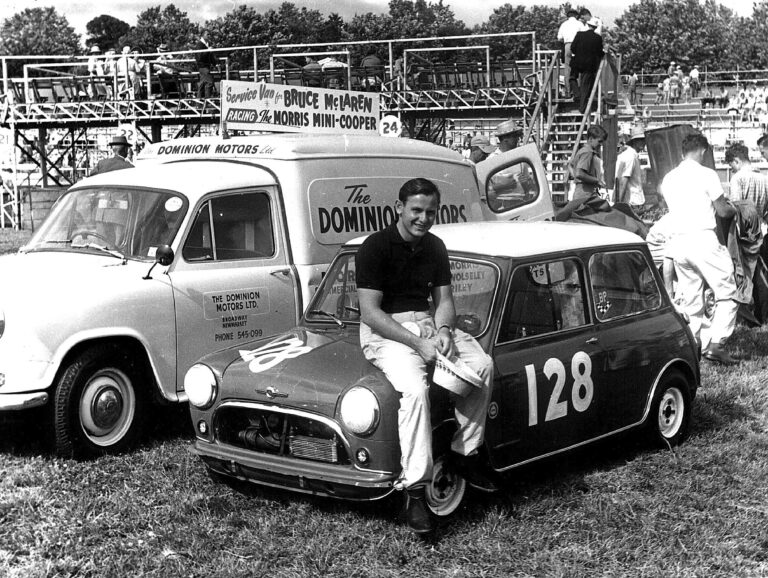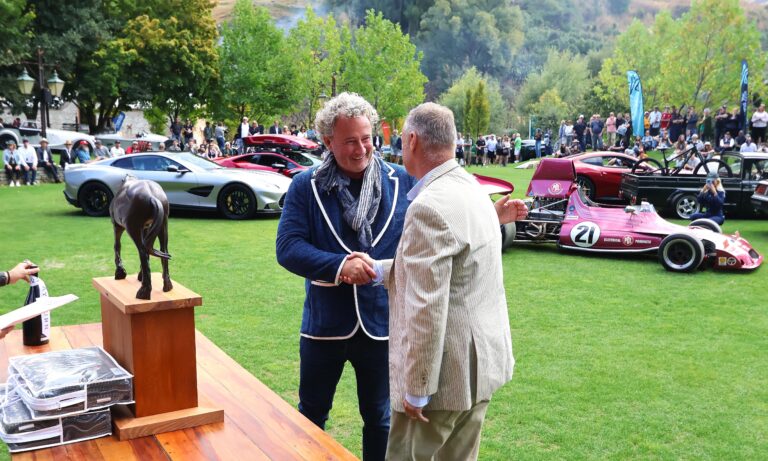When Colin Macbeth set out to recreate an icon, he also wanted it to pay tribute to its Nascar racing heritage
By Ashley Webb, photography Strong Style Photo
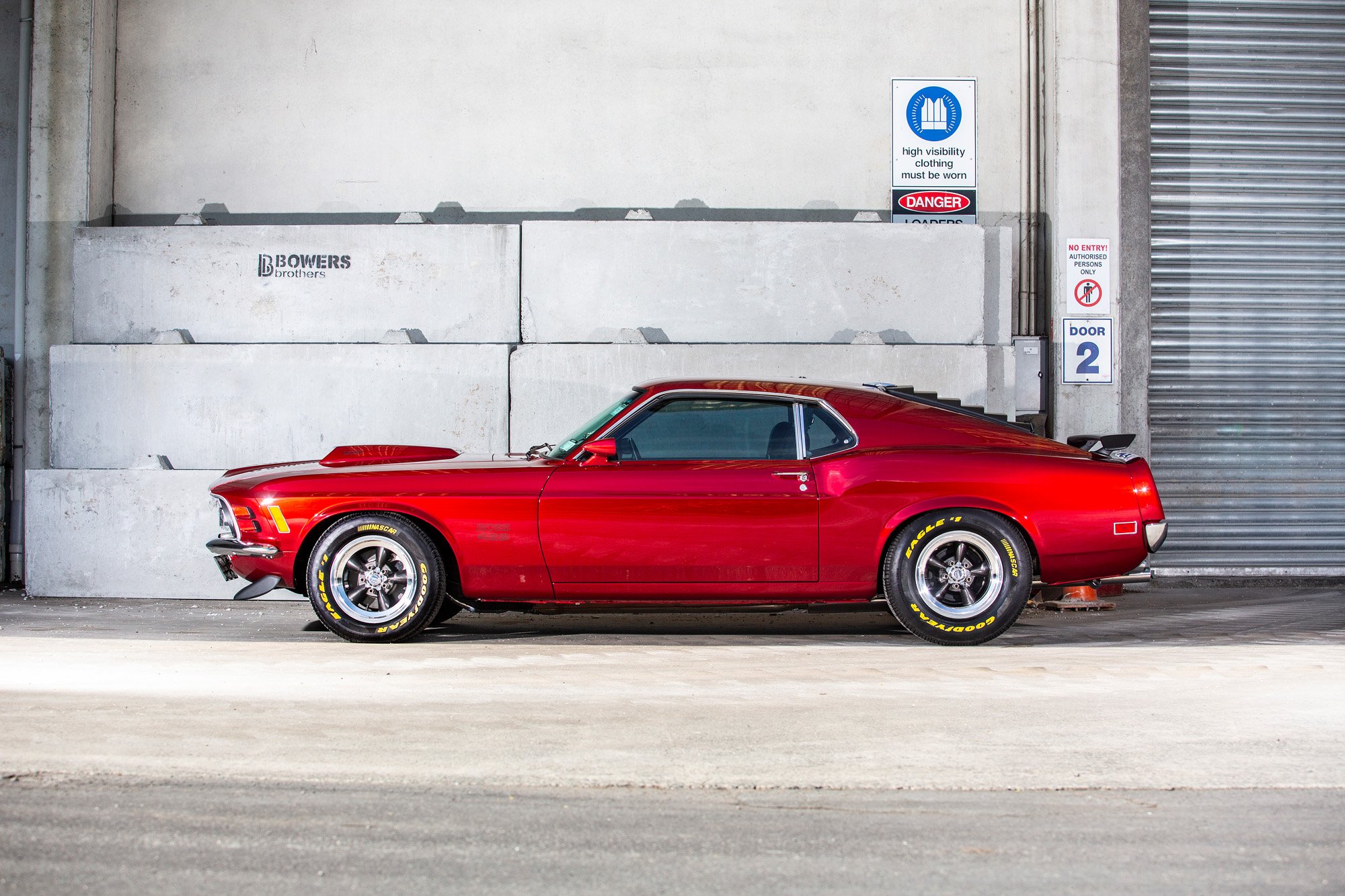
Build what you race and race what you build. That was Ford’s philosophy when it designed a new engine to compete with Chrysler’s big block 426ci Hemi engine, which was dominating Nascar racing during the late ’60s.
Ford decided to join the party by creating the now-iconic Boss 429 engine from its existing 385ci engine, which already boasted such components as four-bolt main caps, a forged steel crank, and forged steel connecting rods.
The new engine also received a set of aluminium cylinder heads with a semi-hemispherical type of combustion chamber, which Ford nicknamed ‘the crescent’. It was designed and built from bottom to top as an all-out racing engine, but it could not take to the Nascar circuits until Ford had used a minimum number of engines in production cars to qualify for use in Nascar series.
The 1969–’70 Mustang was chosen for this homologation task, and in early 1969 Ford unleashed the most powerful Mustang ever built — the Boss 429. Ford contracted the difficult job of shoehorning the massive 429ci engines between the Mustang’s front shock towers to Kar Kraft of Dearborn, Michigan. Kar Kraft, the specialist Ford arm that had built the successful Le Mans GT40s, built the Boss 429 — known simply as the Boss 9 — by modifying four-speed 428ci Cobra Jet Mustangs. The biggest task was to move the entire front suspension outwards by 25mm each side to make enough room for the engine in the engine bay.
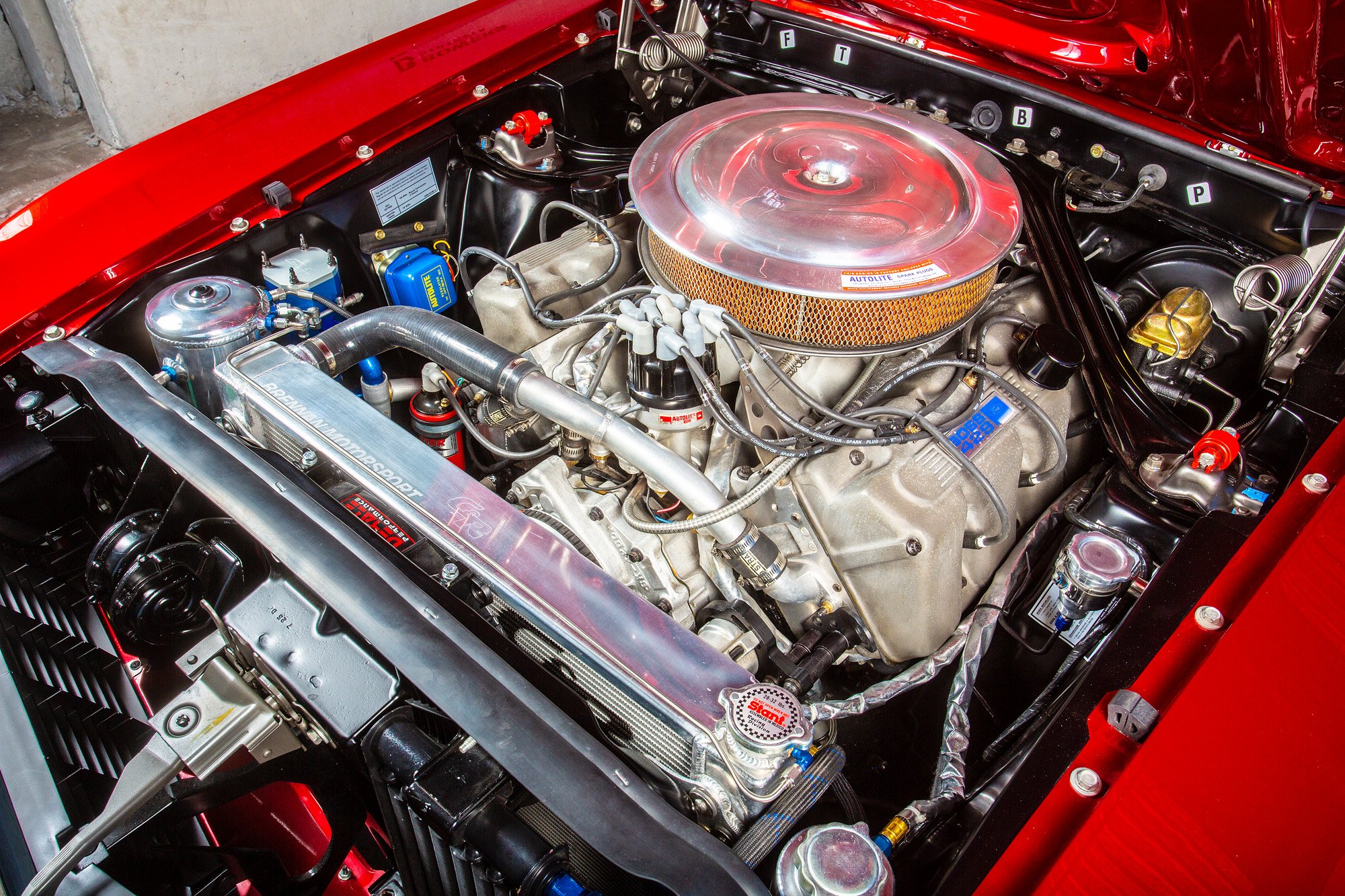
These unique hand-built special performance vehicles were quite the feat of engineering. The task entailed reshaping the shock towers and modifying the suspension and many other components of the Cobra Jet Mustang. The Boss 429s have been acknowledged as one of the foremost American performance automotive accomplishments of the century. The expense was so great that Ford lost money on each one sold but that wasn’t the point.
On the Nascar circuit, the Boss 429s were the most successful and at their first outing won their first race. So dominant were the Boss 429s that after 10 races in the first season they were required to have restrictor plates on the carburettors and intake manifold, reducing fuel and air flow, yet they continued to rack up the wins. The Nascar Boss 429 won 26 of 27 races and the championship.
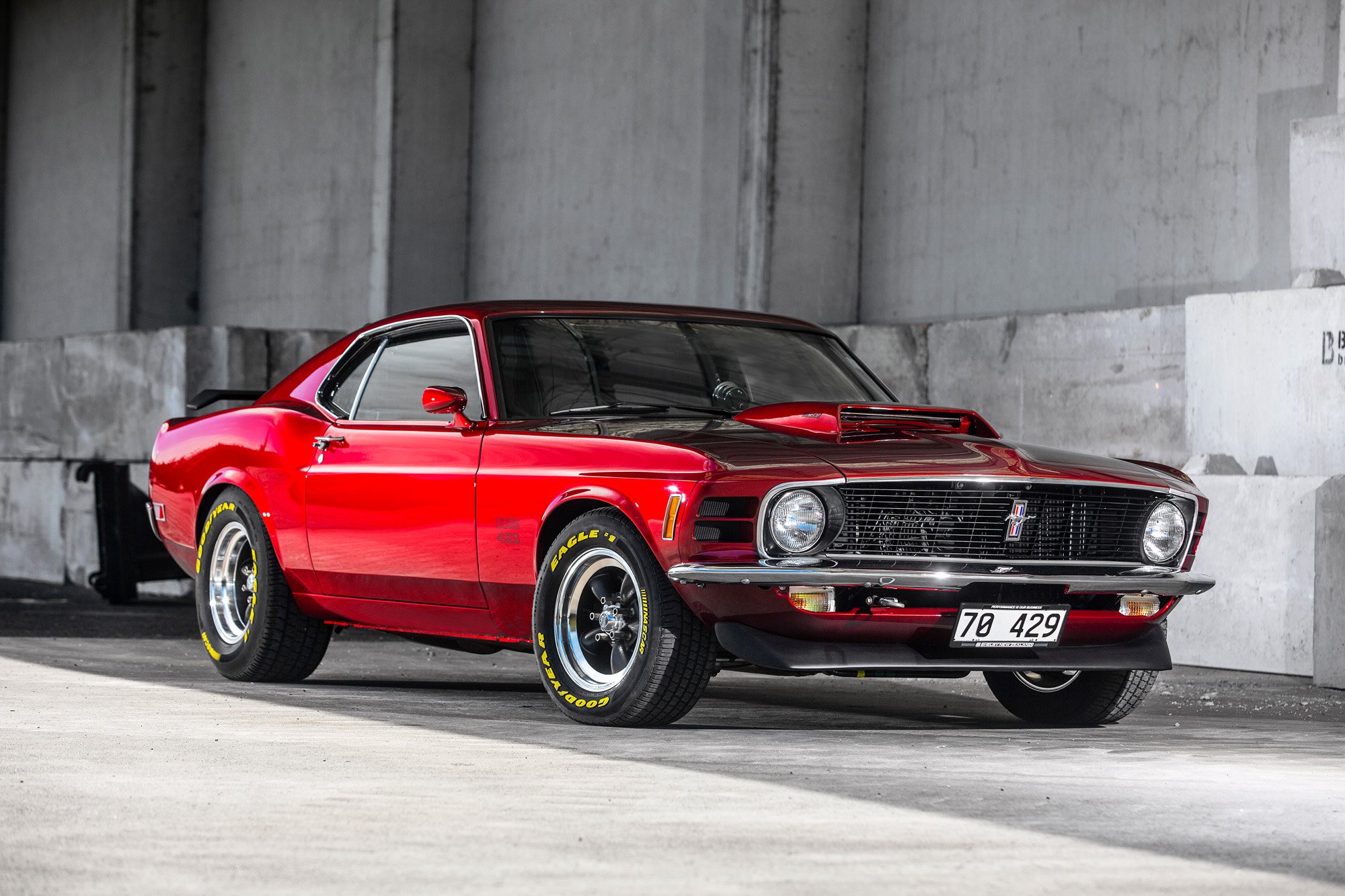
Bruce Meyer, Mr Mayers
Muscle madness
Colin Macbeth has been a car nut all his life. He owned his first car at the age of 16 and hasn’t managed to get cars out of his system since then. Now, at 66 years old, Colin has turned back to American muscle cars with the purchase of this 1970 Mustang.
“I seem to have owned every make of car, including some very special ones that I wish I had left in the garage, one being a genuine 1971 Falcon GTHO Phase 3 and the other a 1974 Ferrari 365 Berlinetta Boxer. I have always been a Ford fan, starting in my younger days with a Mark I Zephyr when Mark I Zephyrs were just the thing to own. [It had] twin side aerials and a stripe down the side,” says Colin.
There were also Mark II, III, and IV Zephyrs plus a few other models including a ’70 Falcon GT, a ’71 Falcon GT, and, of course, the boss of Falcons, the Phase 3 GTHO. Then came the later Falcon GTP models, a Jensen Interceptor, a Corvette, a Mercedes C63S, a Lamborghini Murcielago, a Gallardo Super Trofeo, a Ferrari 308, a 365 Boxer, and many other cars in between those models.
But something was missing with the later model cars: the ability to spend time tinkering with them. Colin has really enjoyed the four-year challenge of hunting for new old stock 429 Boss Nascar parts for this car. They are rare and difficult to get, providing a worthy quest, but he did not enjoy the ridiculous prices needed to secure them.
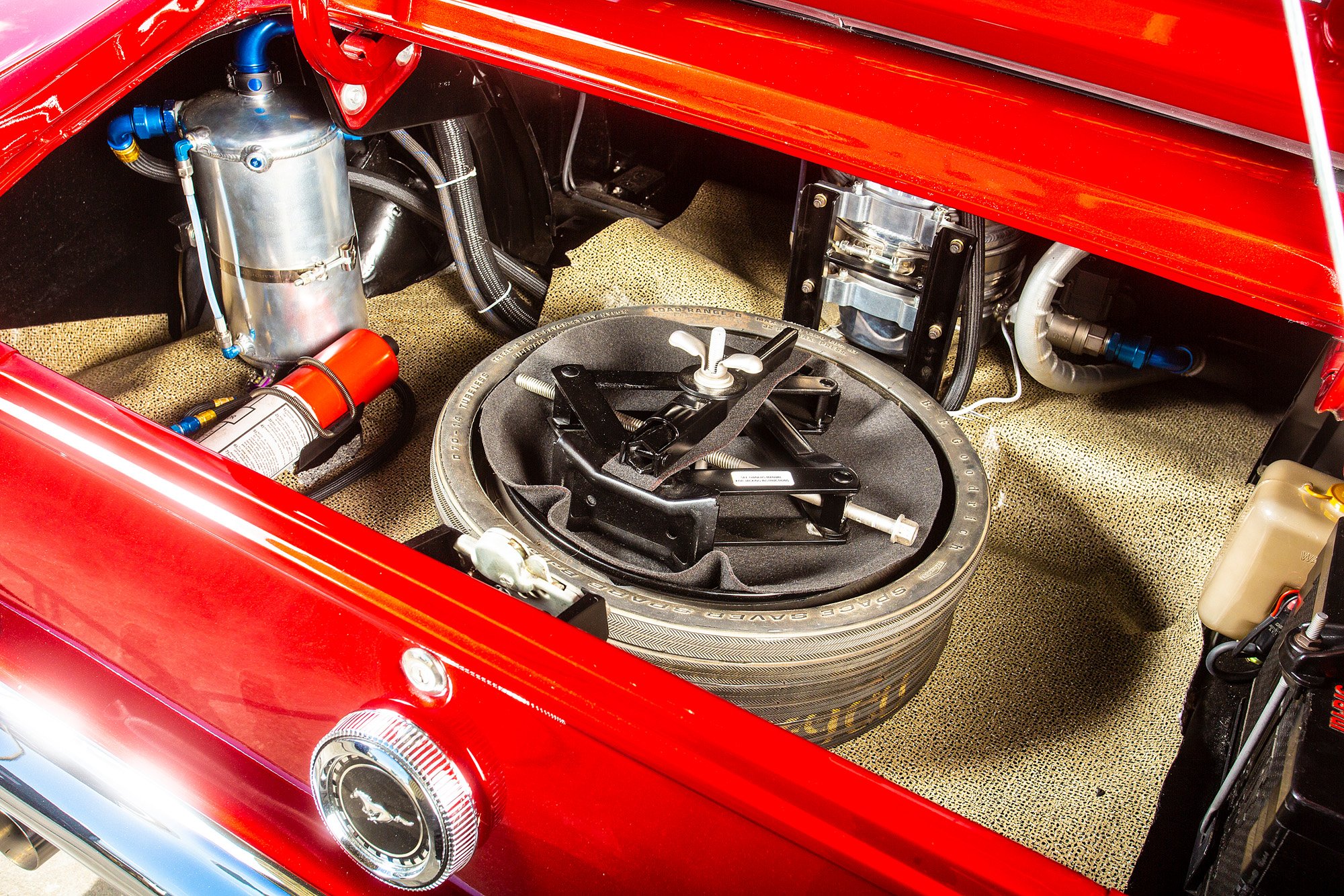
Blank canvas
Colin has owned this Mustang for nine years. The car was purchased from the United States, and it looked great on eBay.
“It had just gone through a restoration and was fitted with a 429ci Boss engine but was not built up from original components and had numerous aftermarket parts,” Colin explains.
The restoration was not up to a high standard so Colin decided to have it totally stripped and restored to concours condition. He wanted the build to honour the history of the Boss 429. He also wanted to pay tribute to the Nascar aspect with some personal touches, so he decided to install a genuine full-spec 429 Nascar race engine.
“Easier said than done,” he admits.
Colin commissioned Matamata Panelworks, which is well known for its exceptional work, to undertake the total strip-down and complete rotisserie restoration. He wanted to keep the vast bulk of the body restoration reflective of the Boss 429. That task included sourcing some new panels such as the genuine, brand-new, unused Boss 429 bonnet and scoop, which had been sitting in someone’s rafters in the USA for many decades.
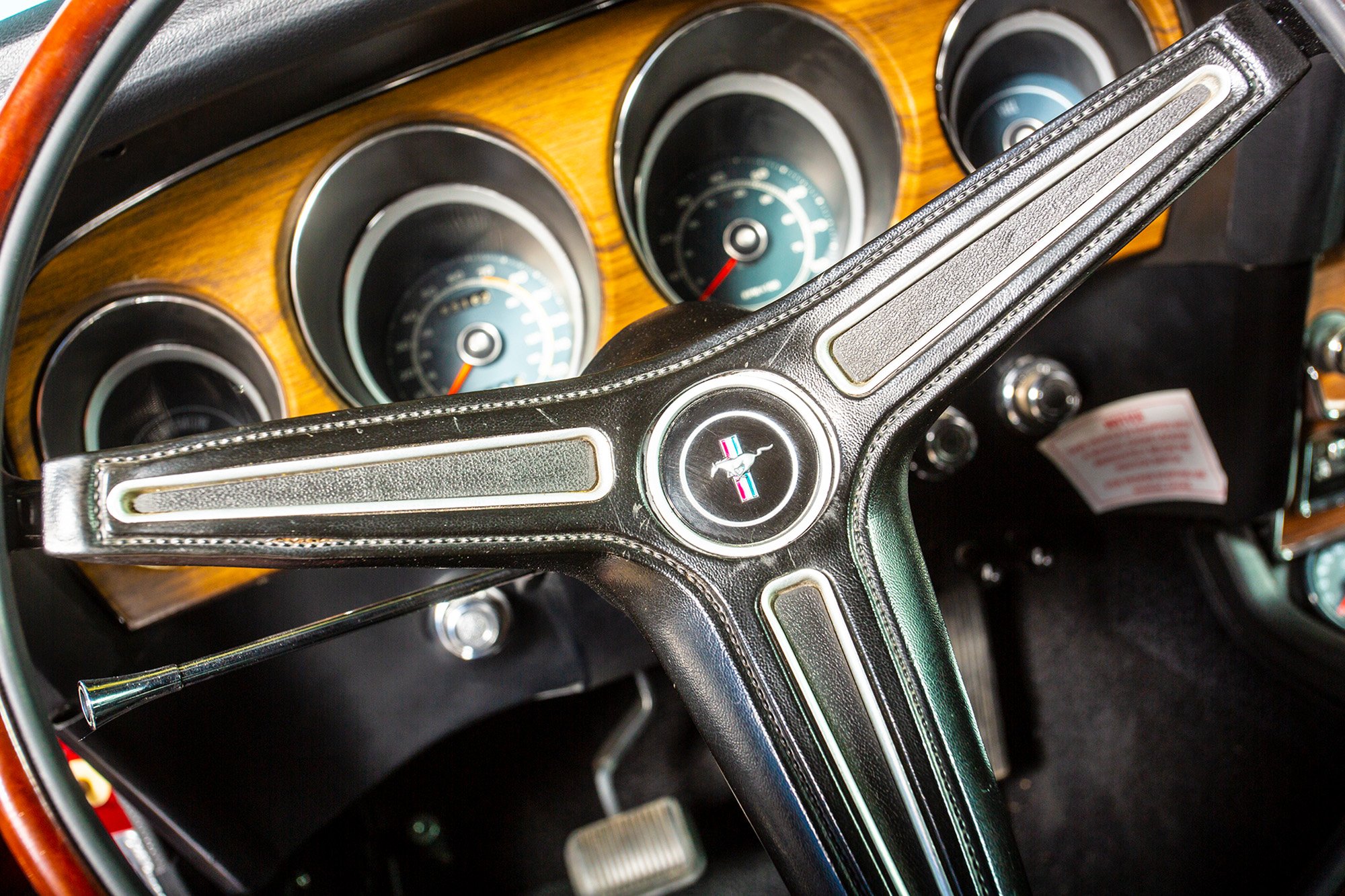
According to Matamata Panelworks’ Malcolm Sankey, “The car was in reasonable shape. There were just lots of small things done badly.”
To start with, the car was entirely stripped back to a bare shell and acid dipped.
“This not only enabled us to see the previous bodywork that had been done in the US, but also gave us a blank canvas to work on,” says Malcolm.
With the paint removed it became obvious there were several areas where patch panels had been welded in.
“These were half-joined patches that weren’t up to NZ specification, and certainly not up to our standards,” says Macolm.
Once the body had been repaired it received a stunning three-layer Candy Liquid Red paint scheme as used on the latest Ford GT models.
“We removed and reinstalled most of the interior. There were some areas that needed to be tidied up and Colin was able to procure many OEM original parts, including an original Boss 429 tachometer,” Malcolm tells us. “It’s a credit to Colin that he was able to track down as many original parts as he did.”
The suspension and brakes were in reasonable shape. Once it was removed, all the componentry was thoroughly checked, refurbished to warrant of fitness standard, and reinstalled. The suspension received the ‘Shelby drop’ of 1½ inches and a set of restored American Racing wheels shod with genuine Goodyear Eagle Nascar tyres, in keeping with Colin’s Nascar tribute theme.

Nascar 429
Colin comes back to the long slog of procuring all the super-rare Ford race parts that made up Ford’s Nascar race engines.
“It took me over four years to find all the original new old stock parts from numerous sources, including Holman & Moody, various Ford forums, and eBay. This engine is an exceptionally rare full Nascar race engine. The only real variation is the cam to make it somewhat driveable,” Colin explains.
As with all the Nascar race engines of the era, this motor differs considerably from the factory Boss 429 engines.
“The key components in my engine include a special Nascar engine block that is stronger with a higher nickel content and is designated with an ‘R’ for race stamped in the valley. The engine also includes such components as a Nascar specific crankshaft, Nascar pistons and rod combination, Nascar ported full Hemi valve train heads with 2.3-inch intake valves, Nascar rocker arms, massive intake ports — which a tennis ball will almost fit into — Spyder race intake manifold, 1150cfm carburettor, Nascar aluminium water pump, and a complicated dual gear oil pump / dry sump system with the Nascar oil tank and breather overflow tanks in the boot.”
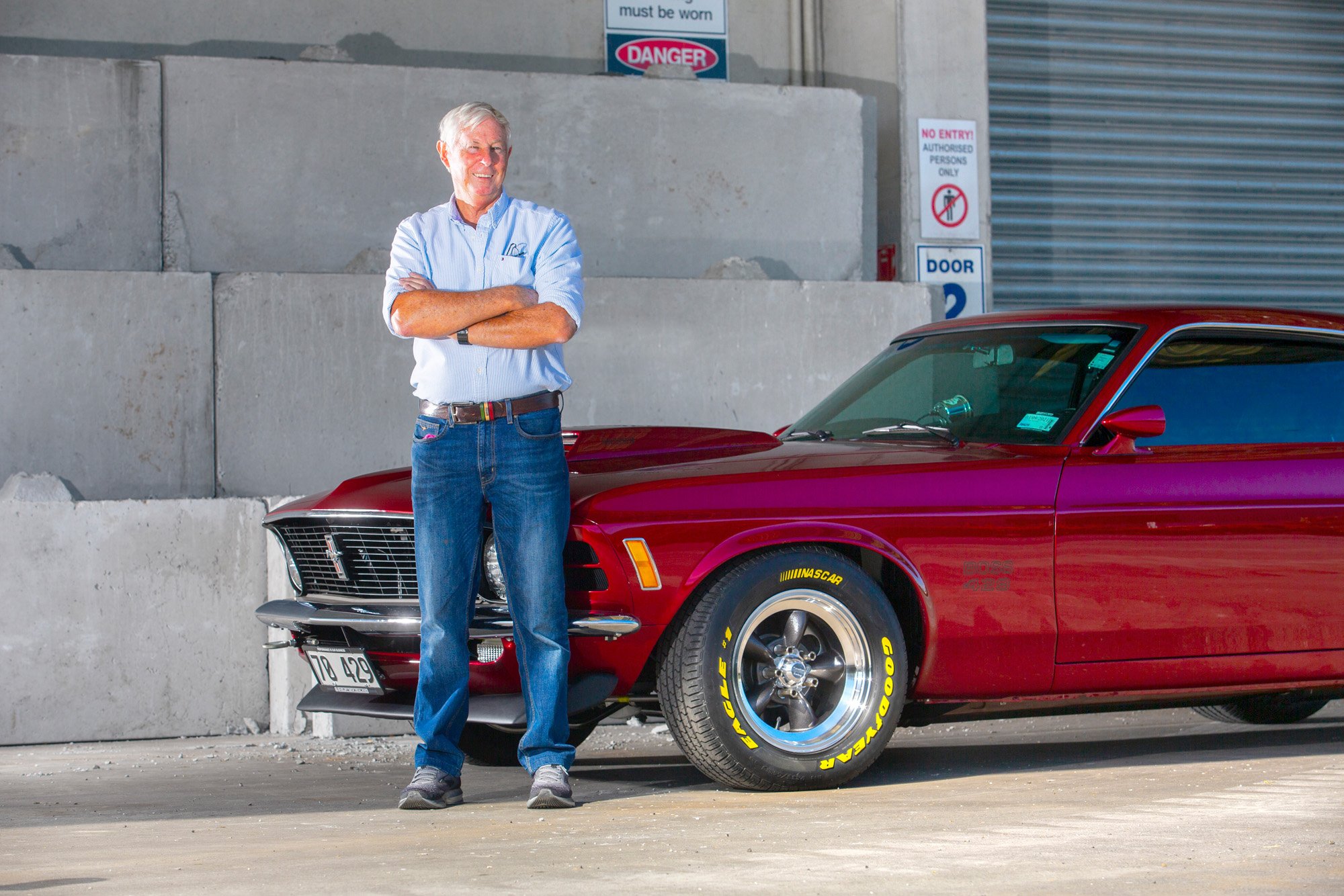
Fiat 600-based buggy
The engine was built to an exceptionally high standard by Brennan Motorsport in Tauranga. The naturally aspirated race engine was fully balanced and blueprinted, putting out a healthy 707bhp (527kW) and 670Nm of torque.
“With the race cam it would be over 800bhp. I have that cam but it would be a handful to drive,” says Colin.
Colin included some other additions that reflect the Boss 429 heritage, protect the engine, and meet the goal of having a streetable machine as well as finding a balance of old and new with personal touches. These include a Tilton dual disc hydraulic clutch, magnesium rocker covers, an electronic motorised ball valve in the oil line, custom race exhaust headers, a three-inch stainless steel exhaust with adrenaline mufflers, a Boss 429 oil cooler, a C&R radiator, and a Nascar radiator overflow tank.
“I would not have been able to source the parts without the help of my wife, Delcie, as I am a bit of a caveman and technology left me behind. I am exceptionally happy with the way the Mustang turned out and having built it my way. This certainly is the last car I will build, and it will be kept in the family for many years,” Colin tells us.
This article originally appeared in New Zealand Classic Car issue No. 370


